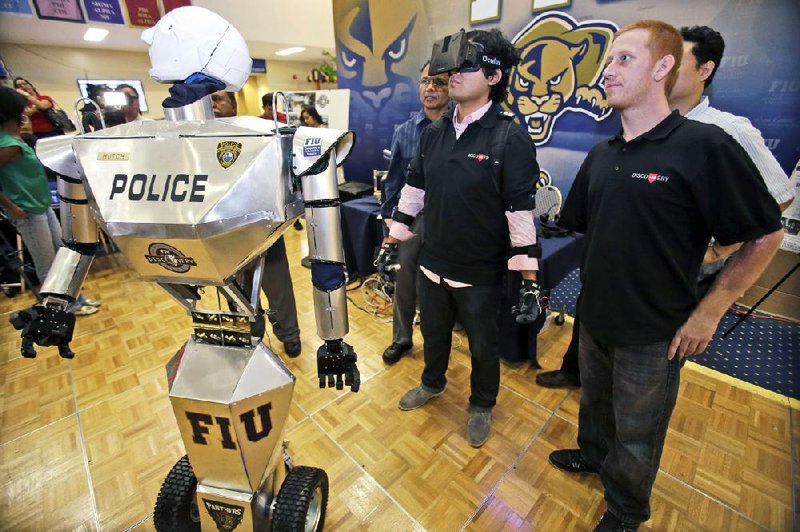MIAMI - Students and researchers at Florida International University in Miami took part in a demonstration to show a prototype of their version of a RoboCop that will allow disabled police and military personnel get back into the workforce, school officials said.
It took about 18 months for the group with the school’s Discovery Lab to develop the TeleBot, which combines telepresence and robotics.
Nagarajan Prabakar, a computer science associate professor, said Wednesday that the prototype allows a disabled person to control the robot remotely, see everything the robot “sees” and interact with members of the public.
The TeleBot has two high-definition Web cameras in its eyes to generate a live, three-dimensional view, he said. It also has a computer inside its metal frame surrounded by wires. The robot imitates all of the movements of the demonstrator - the student in this case, police or military officers in the future - who is wearing about 30 sensors on his shoulders, elbows, head and fingers. A joystick moves the robot forward, back and in circles.
Student Jaime Danow, 28, is in charge of developing the user interface for people missing their upper extremities.
“This is perfect for me,” said Danow, who lost his right arm in a motorcycle accident in 2006 and can no longer fully bend his left elbow. “I never could have imagined I would have this opportunity. Things happen sometimes maybe for a reason, and you don’t realize that.
“I have a much better understanding than someone who is not missing their limb.”
The TeleBot is currently for those who are disabled from the waist down, but researchers said they hope their future work will allow demonstrators to control the robot with just their legs if they are missing their upper extremities. They may also come up with a sleeker design so the robot can run on different terrain.
The TeleBot project began in 2012 when Jeremy Robins, a lieutenant commander in the U.S. Navy Reserves, donated $20,000 to the Discovery Lab to develop the idea.
“What impresses me most about the TeleBot prototype is that most of the work was performed by undergraduate students operating under very tight budget and time constraints,” Robins said in a statement.
The TeleBot costs about $50,000 and was recently shown to theatergoers before the premiere of the latest RoboCop movie. Researchers said they were also fans of the original movie series that first aired in the late ’80s.
It stands 6 feet tall, weighs about 75 pounds and is controlled from a remote location. This one is named Hutch after the 2004 movie and 1970s TV series Starsky and Hutch.
Business, Pages 19 on 02/17/2014

